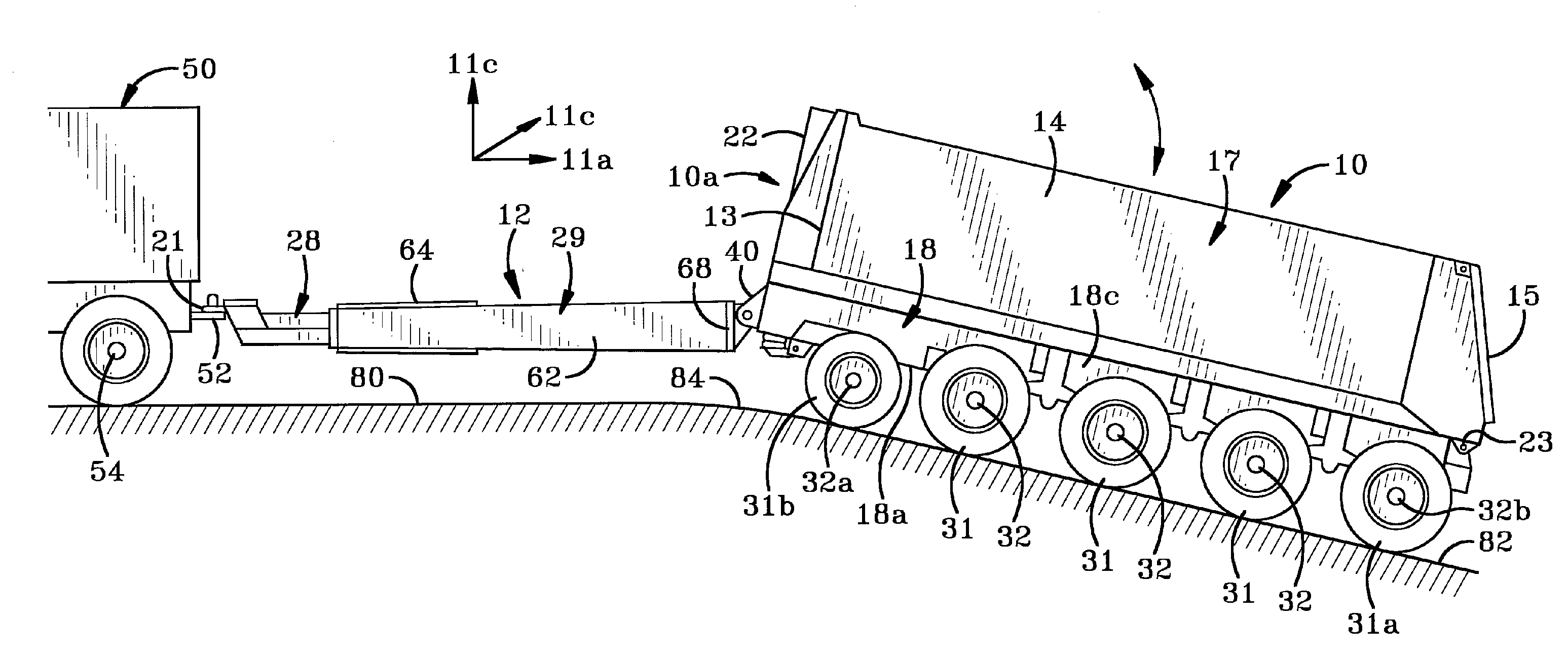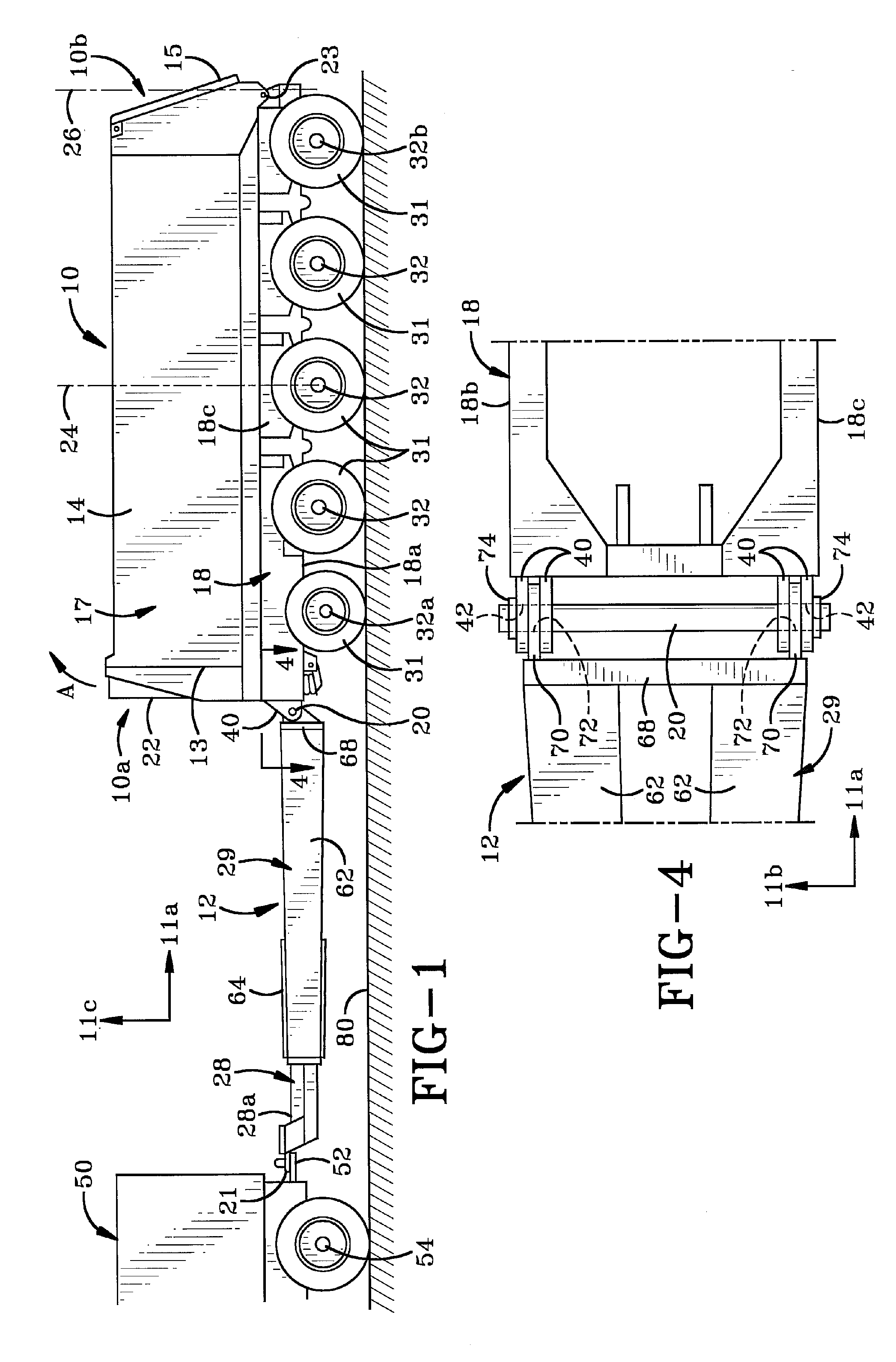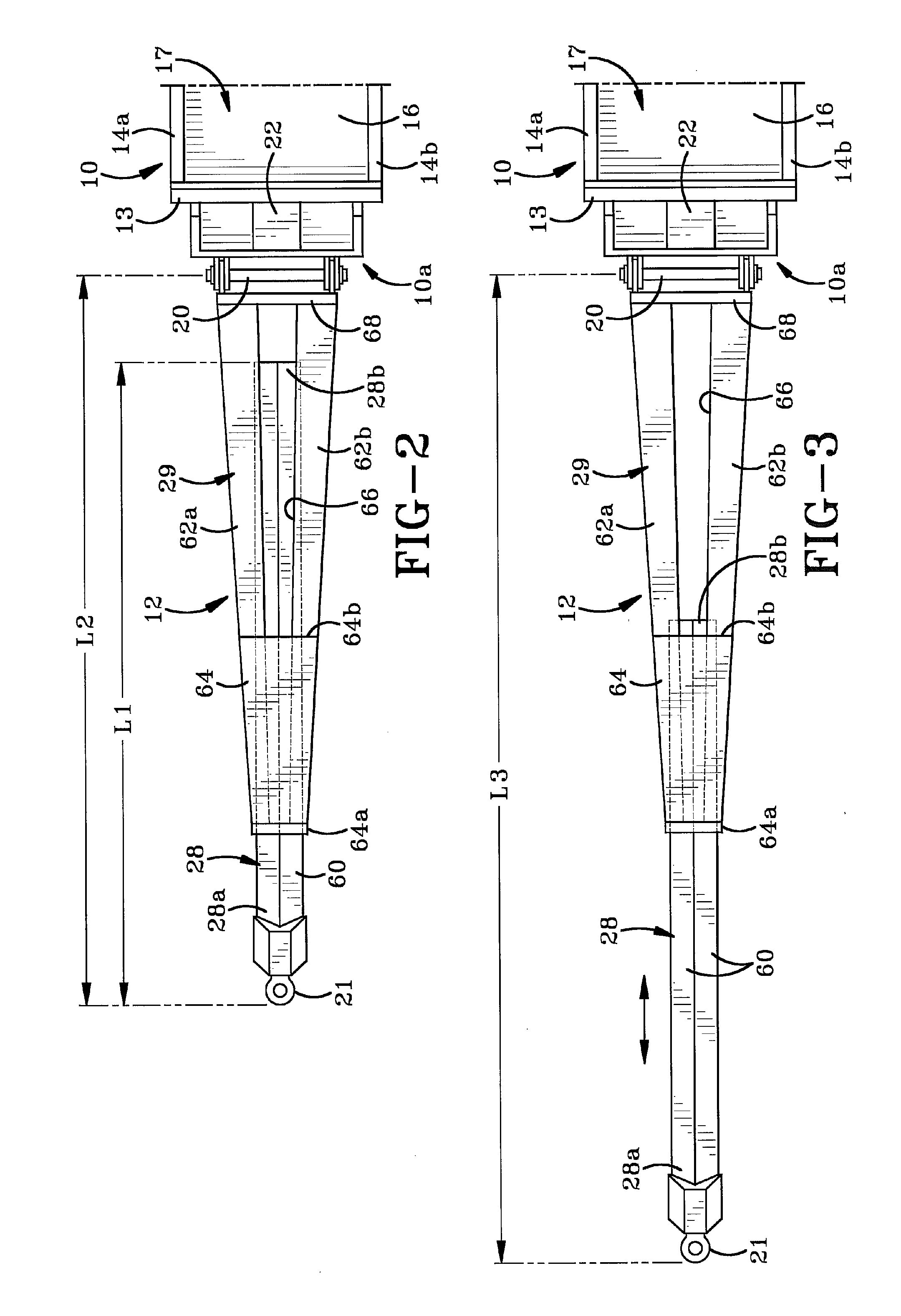Towable trailer assembly
- Summary
- Abstract
- Description
- Claims
- Application Information
AI Technical Summary
Benefits of technology
Problems solved by technology
Method used
Image
Examples
Embodiment Construction
[0024]Referring to FIGS. 1-5, there is shown a self-supported trailer in accordance with the present invention and generally indicated at 10. For the purposes of this description, it may be advantageous to define a longitudinal direction “11a”, lateral direction “11b” and transverse direction “11c” positioned to be mutually orthogonal. In general, the longitudinal direction 11a will be aligned with the longitudinal axis of trailer 10. The lateral direction 11b will extend substantially at right angles to the longitudinal axis of trailer 10 and the transverse or vertical direction 11c will be aligned with a direction close to vertical. All directions are relative with respect to trailer 10. Trailer 10 is designed to support and transport a payload therein and to dump the same. Trailer 10 is further designed not to overturn during such operations.
[0025]Trailer 10 comprises a front wall 13, a pair of opposed side walls 14, a rear dump door 15 and a floor 16 (FIG. 2). Floor 16 may addit...
PUM
 Login to View More
Login to View More Abstract
Description
Claims
Application Information
 Login to View More
Login to View More - R&D
- Intellectual Property
- Life Sciences
- Materials
- Tech Scout
- Unparalleled Data Quality
- Higher Quality Content
- 60% Fewer Hallucinations
Browse by: Latest US Patents, China's latest patents, Technical Efficacy Thesaurus, Application Domain, Technology Topic, Popular Technical Reports.
© 2025 PatSnap. All rights reserved.Legal|Privacy policy|Modern Slavery Act Transparency Statement|Sitemap|About US| Contact US: help@patsnap.com



